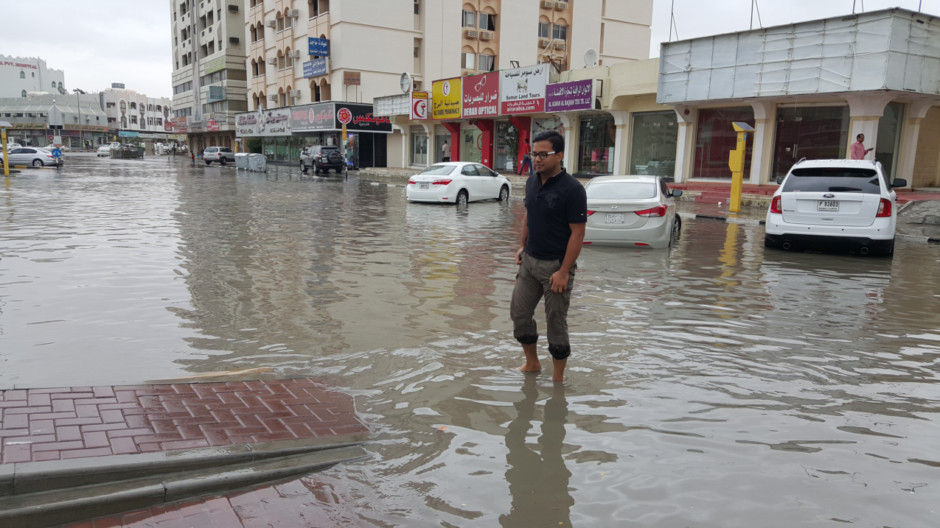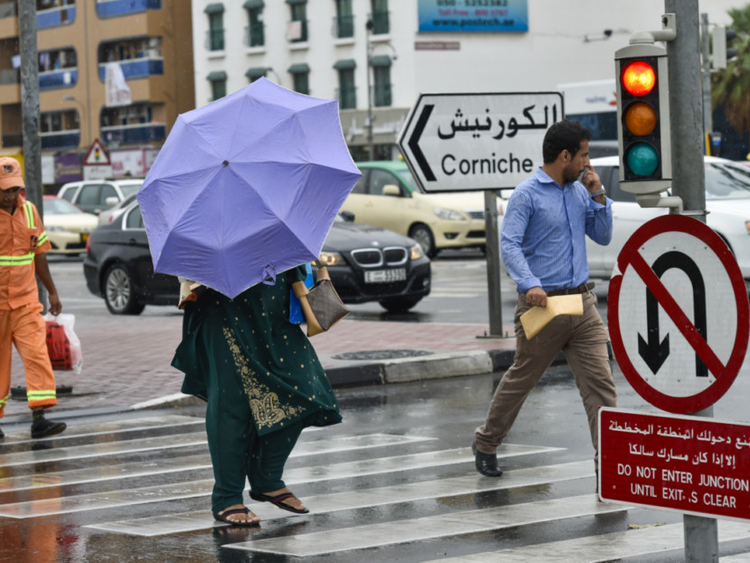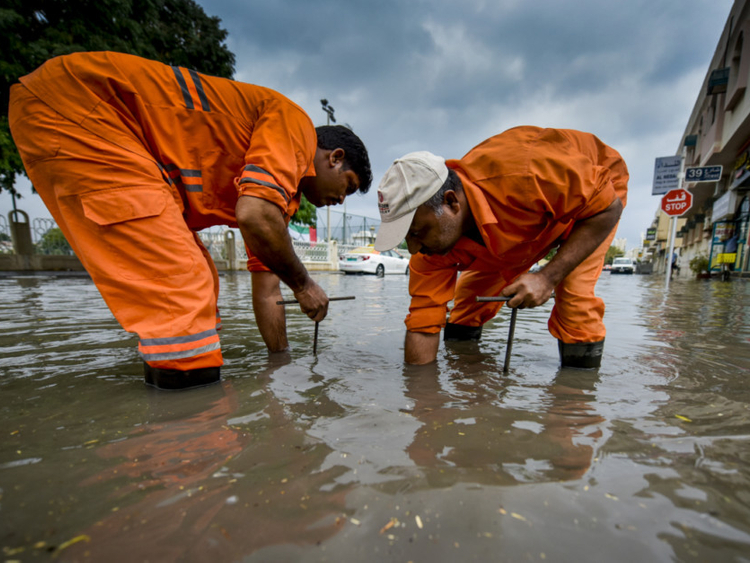Dubai: Heavy rains partially closed Dubai International Airport and caused traffic accidents in the UAE on Sunday morning, catching residents off guard after a warm and sunny weekend.
But the rough weather is expected to clear in two or three days, with overcast skies partially dispersing on Monday and Tuesday to allow pockets of sunshine through, forecasters at the national weather bureau said.
On Sunday morning, Dubai Police recorded 515 traffic accidents that varied between minor and moderate cases.
No deaths were reported.
Lt Col Khazraj Al Khazraji, Deputy Director of the Command and Control Room at Dubai Police’s Operations Department, said that the command and control room received 2,503 calls between 6am and 12pm due to the rough weather.
“Motorists must abide by the traffic laws, especially when there is rain, fog, and winds that may carry sand and dust that affect visibility,” he said.
He also urged motorists to ensure that their windows are clean and that their brake lights are working. People should drive slow, avoid tailgating, and stay in their lanes in such conditions, he added.
“Accidents that occur during such weather conditions can be extremely dangerous due to reduced visibility, especially if people are driving recklessly or speeding,” he said.
Motorists should not turn on their hazard lights unless there is an emergency and they need to come to a full stop, he said.
Lt Col Al Khazraji said that motorists should be more alert on the road in such conditions so that they can react in time to any sudden road situations such as a sudden stop or other unexpected occurrences.
Sunday’s showers were expected to weaken to a drizzle in scattered parts of the country, with cloudy weather predicted for the western region, said Dr Ahmad Habib, Specialist Meteorologist, National Centre of Meteorology and Seismology (NCMS).
However, because of the prevailing north-westerly “strong and fresh winds”, the sea will likely remain “very rough” on Monday, he added.
The cooler weather, which saw the mercury plunge by around 10C between Saturday and Sunday, is also expected to stay on Monday and Tuesday.
Saturday’s maximum temperature had touched almost 32C in the UAE’s Al Jazeera area, NCMS said. By Sunday morning, the lowest recorded temperature was 10.7C on Jais Mountain in Ras Al Khaimah.
Despite the dramatic change in conditions overnight, the weather is “normal for this time of year in the UAE. We are expecting more or less the same pressure system and air mass from Sunday to stay for a few days”, Dr Habib said.
He added that the NCMS carried out cloud seeding on Sunday in a bid to boost precipitation levels. “In general, I think we are relatively successful in doing that. However, it is very difficult to say how much of the total precipitation is natural and how much is ‘artificial’ because of cloud seeding.”
Dr Habib pointed out that cloud seeding – where substances (usually salt compounds) are dispersed into clouds by aircraft – is not undertaken to “make rain” but rather to increase the amount of rainfall.
On Sunday, the conditions were right for cloud seeding – low-lying stratiform clouds where some cloud “cells were embedded with updraft” of air.
“The clouds of the winter are different from the clouds of the summer in the UAE. When we find the right clouds and conditions, we send the cloud-seeding planes up,” Dr Habib added.
Sunday’s cloud seeding operations had started before dawn and continued well past midday.
Through the NCMS, rain-deficient UAE has been using cloud seeding since 2001 to address the country’s annual average rainfall of less than 100mm, or about four inches.
Some experts believe there could now be another factor increasing rainfall in the region – the El Nino effect.
El Nino is a natural weather phenomenon that sees warm waters of the central Pacific Ocean spread eastwards towards North and South America, setting off a series of changes that also effect other regions.
“In the Middle East, recent studies from example have shown that in pre-1980s, El Nino used to be associated with reducing rainfall in the average of Arabic Peninsula rainfall. However, in recent years, it seems El Nino is associated with more rainfall over the same domain,” Omar Baddour, a World Meterological Organisation scientist, had earlier told Gulf News.


















